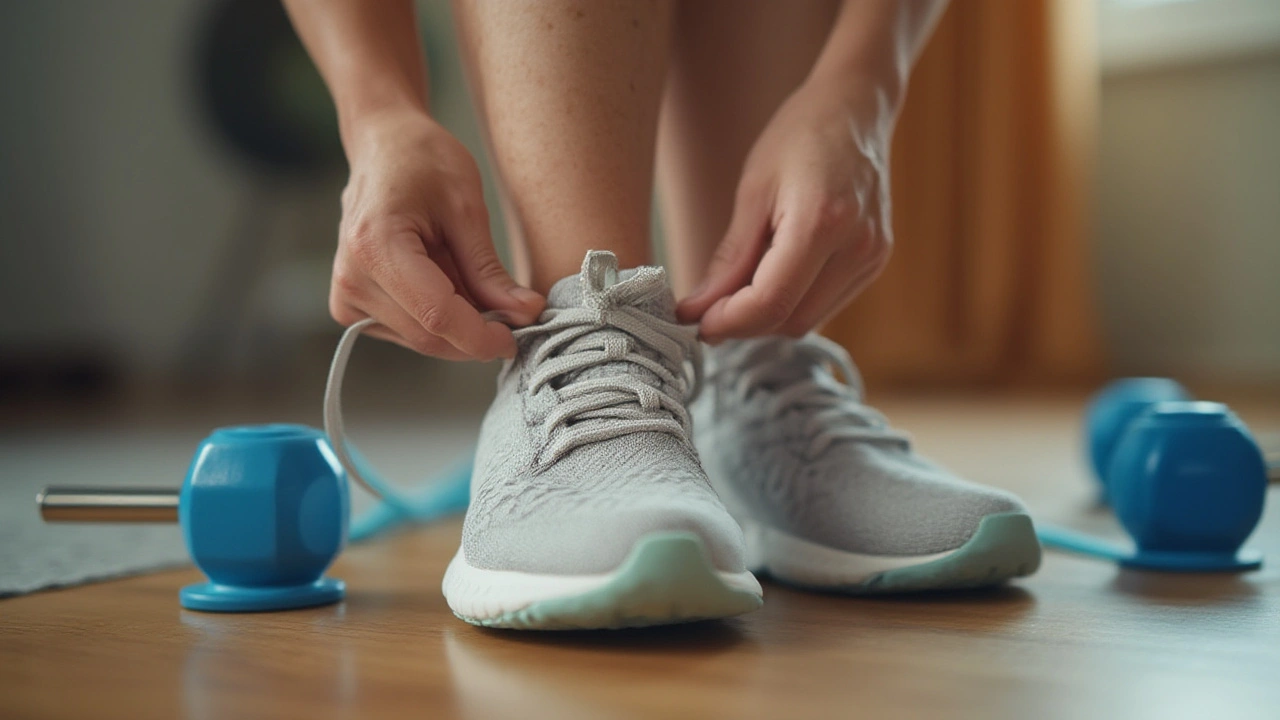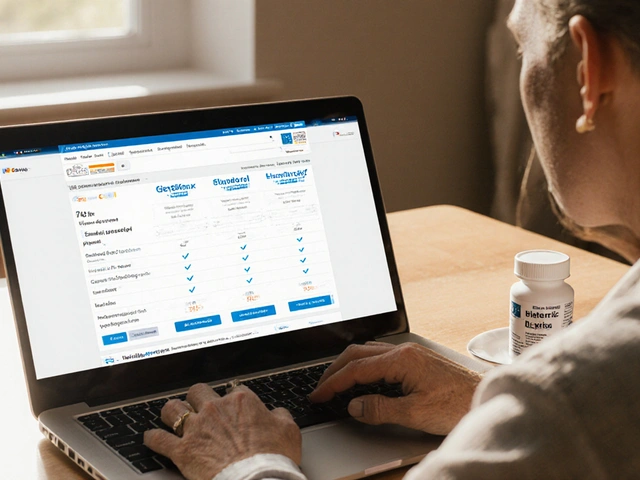Crushing joint pain has a way of wrecking your plans and your mood. Scary thing is, once you get hit with the stiffness and swelling from arthritis, life can shift fast. A lot of folks land on prednisone to knock back the misery, but the side effects mess with more than just your body—they mess with your whole sense of self. But what if you could take a different path that actually works? Turns out, there’s more than one route out of pain. Dig into options like DMARDs, COX-2 inhibitors, and even solid, science-backed physical therapy, and discover relief that doesn’t drain you dry.
DMARDs: Rewriting the Inflammation Script
So here’s the thing about Disease-Modifying Anti-Rheumatic Drugs, or DMARDs: they don’t solve everything overnight, but they can actually change the course of arthritis. Sound dramatic? For people with rheumatoid arthritis or psoriatic arthritis, that’s the reality. Unlike prednisone, which acts like a panicked firefighter, DMARDs work quietly behind the scenes to slow or stop the cells causing damage in your joints.
Methotrexate is the most recognized DMARD and shows up in almost every rheumatologist’s first-line treatment plan. Why? Because it can reduce joint damage substantially and lower the odds that arthritis eats away at your mobility long term. But it’s not a magic pill. Methotrexate usually takes a few weeks—sometimes even months—to kick in. Some folks feel better after a couple of weeks, others wait a bit longer. Brand names like Arava (leflunomide) and Azulfidine (sulfasalazine) are also in the DMARD family, each with its own set of pros and cons.
One thing that makes DMARDs a standout alternative to steroids: their ability to actually protect your joints, not just hide symptoms. That means less joint crumbling, fewer deformities, and hopefully, a more normal life. Side effects? Sure, they’re not absent, but most people find them manageable, especially when the tradeoff is skipping out on prednisone’s nastier problems like osteoporosis or wild blood sugar spikes.
It’s worth noting that doctors keep a close eye on you when prescribing DMARDs with regular blood work, just to keep your liver, kidneys, and immune system in check. But imagine this: you slow the whole disease train down instead of riding the rollercoaster of up-and-down inflammation with prednisone. If you’re interested in seeing which of these DMARDs might line up with your needs, rheumatologists will usually tailor regimens to fit your type of arthritis, how quickly it’s progressing, and how your body handles the meds.
And then there’s the biologic DMARDs. These are a leap into high-tech territory—lab-engineered molecules that target specific troublemakers in your immune system, like a guided missile instead of grenade. TNF-inhibitors such as Humira or Enbrel are well-known here and are often used when the standard DMARDs don’t cut it alone. Yes, they need to be injected, but some people find they’re the break they’ve been searching for—without prednisone’s baggage.
Tip: Don’t be afraid to ask about combination therapy. Many doctors mix traditional DMARDs with a biologic, or layer in an NSAID, for a stronger punch. The trick is close follow-up and honest reporting back about side effects or changes in how you feel. The end goal: catching joint damage before it can get fully unleashed. Want a comprehensive breakdown? Here’s a goldmine about alternatives to Prednisone for inflammation—worth the click to compare what’s out there.
COX-2 Inhibitors: NSAIDs Minus the Gut Burn
Everyone knows about nonsteroidal anti-inflammatory drugs (NSAIDs) like ibuprofen for knocking out joint pain, but it’s the COX-2 inhibitors that are changing the game for folks with arthritis who don’t want to mess up their guts. The science? It’s all about blocking the COX-2 enzyme that amps up inflammation, swelling, and pain—but without blocking COX-1, which helps keep your stomach lining safe.
Celecoxib (the generic for Celebrex) is leading the COX-2 pack these days. It doesn’t guarantee freedom from ulcers or bleeding, but, compared to older NSAIDs, it’s a huge step up for people forced to take anti-inflammatories long term. Clinical studies in the past few years have cemented the idea that COX-2 inhibitors reduce pain and boost mobility in people struggling with osteoarthritis or rheumatoid arthritis, all while keeping major GI problems in check.
But do they come with zero risks? Not quite. You have to weigh them carefully—especially if you have heart disease, since some COX-2 blockers have been linked to increased cardiovascular risk. That’s why these drugs come with fine print, and your doctor will ask plenty of questions before giving you a script. There are no free lunches when it comes to pain relief.
One overlooked fact: using COX-2 inhibitors doesn’t mean you have to stop all other therapies. Many people pair them up with a DMARD or physical therapy program for a blended approach that attacks inflammation from different angles. For stubborn flare-ups, doctors sometimes layer a short course of COX-2 drugs with low-dose prednisone, then drop the steroid fast to keep side effects down. That’s all about striking a safe balance—keeping your joints moving without taking hits elsewhere in your body.
If you’re somebody with sensitive stomach lining, a history of ulcers, or a digestive system that rebels at the first sign of ibuprofen, COX-2 inhibitors are worth asking your doctor about. They aren’t perfect, but for many folks, they’re the difference between couch-bound and actually getting your shoes on and heading outside. Some insurance plans require you to try regular NSAIDs first, but appeal processes exist if you’ve racked up enough failed attempts or side effect nightmares.
Let's not skip over dosage tricks. Taking your COX-2 inhibitor with food can help reduce what little risk there is of GI upset. And always stick to the lowest effective dose—higher is not always better here. Most docs suggest periodic check-ups to monitor for any blood pressure or kidney changes, because these sneaky side effects can creep up without the classic warning signs.

Physical Therapy: Moving Pain Out of the Picture
Sometimes the solution isn’t a pill—it’s a plan. Physical therapy takes a totally different approach by using movement, strength, and flexibility, not just chemicals, to fight inflammation. It may sound less flashy, but it’s proven, and in many cases, it works even better when combined with DMARDs or anti-inflammatory drugs.
Physical therapists are the unsung heroes in the arthritis world. They start by doing a deep dive into how you move, where you hurt, and what your daily life actually looks like. Then comes the individualized plan. For some, that’s daily stretching routines to loosen up stiff hips or knees. Others benefit from carefully added strength training to stabilize joints and reduce the pounding that leads to swelling.
A big part of the magic is teaching you to move smarter, not harder. Simple tricks like adjusting how you stand up from a chair, or switching to joint-friendly exercises (think swimming or cycling instead of pounding the pavement), can mean less pain with more activity. Plus, PTs can show you adaptive devices—canes, braces, shoe orthotics—that unlock independence and cut down stress on those angry joints.
Cold, hard science backs it up: A 2023 meta-analysis from the Journal of Rheumatology found regular, targeted PT reduced pain and improved joint function better than medication alone in many arthritis patients. That’s not a fluke. Patients sticking to customized therapy programs often report fewer flare-ups, faster recovery after activity, and a big boost in confidence. And unlike some meds, no worry about damaging your stomach or ramping up blood sugar.
If you’re intimidated by the gym or don’t know where to start, ask your doctor for a referral to a rheumatology-experienced physical therapist. Most insurance plans will cover quite a few sessions, and you can always take home routines for long-term maintenance. Don’t overlook group exercise classes programmed specifically for arthritis—these can be more fun and motivating than solo stretching in your living room.
Want a pro tip? Set reminders to do stretches and follow the routines daily. Even on good days, momentum matters—a week off can undo a lot of progress. And always flag new pain that doesn’t improve or gets worse—sometimes that signals a need to tweak your program. The best thing: there’s almost no downside to trying physical therapy, and even small wins (like reaching the top shelf pain-free) add up to a happier life.
Mixing and Matching: Building a Personal Plan for Relief
If arthritis was the same for everyone, there’d be a one-size-fits-all fix. But what knocks out pain for your neighbor might not do a thing for you. So many people need a combo—sometimes DMARDs team up with COX-2 inhibitors, other times it’s a daily PT routine sprinkled with occasional anti-inflammatories. What matters most is trial, error, and honest reporting about what hurts, what helps, and what isn’t cutting it anymore.
Adopting DMARDs early in your diagnosis can sometimes dodge future surgeries or irreversible damage—and that beats playing catch-up later. For folks with milder arthritis or those who can’t tolerate oral meds, a ramped-up physical therapy plan might carry most of the weight, with COX-2 inhibitors added for the worst days. Don’t get stuck thinking you only have room for one option. Rheumatologists are trained to layer, substitute, and pivot as you go.
It pays to stay curious about new therapies. Newer biologic DMARDs, for example, keep rolling out, and there’s ongoing research on even safer COX-2 inhibitors. Digital health apps are popping up to help people track daily symptoms, pain triggers, and reaction to each intervention, turning you from a passive patient to an active participant in your own relief plan.
Here’s one more important point: people who take their time learning about alternatives to prednisone—and who don’t shy away from discussing challenges with their care teams—are the ones who report the best quality of life. Sometimes the biggest win isn’t a total cure, but gaining back things you thought you lost: walking without fear, knitting for hours, or just sleeping through the night.
No matter where you are in your arthritis journey, a customized plan drawing on DMARDs, COX-2 inhibitors, and hands-on physical therapy can get you moving forward. Keep questions handy for your next appointment, try out new routines with an open mind, and never settle for living life in a pain bubble. Relief really can look a lot different—and a lot brighter—than a lifetime stuck on steroids.






When you’re staring down at a steroid bottle, it helps to step back and think about the bigger picture. DMARDs aren’t a magic bullet, but they do target the underlying immune drivers of arthritis, which can preserve joint structure over time. Methotrexate, for instance, has a solid evidence base and many patients report steadier improvement after the first few weeks. Pairing a DMARD with a COX‑2 inhibitor can smooth out the pain spikes while you wait for the disease‑modifying effects to kick in. And don’t forget physical therapy – it’s the low‑cost, low‑side‑effect adjunct that keeps muscles supporting the joints.
July 29Ultimately, a balanced plan that mixes meds, movement, and regular monitoring tends to outshine a steroid‑only approach.
gary kennemer